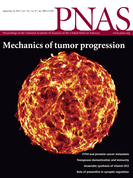SummaryWe demonstrate that reactions confined within single-walled carbon nanotube (SWCNT) channels are modulated by the metallic and semiconducting character of the hosts. In situ Raman and X-ray absorption near-edge structure spectroscopies provide complementary information about the electronic state of carbon nanotubes and the encapsulated rhenium species, which reveal electronic interactions between encapsulated species and nanotubes. More electrons are transferred from metallic tubes (m-SWCNTs) to oxidic rhenium clusters, leading to a lower valence state rhenium oxide than that in semiconducting tubes (s-SWCNTs). Reduction in 3.5% (vol/vol) H2/Ar leads to weakened host–guest electronic interaction. The high valence state Re within s-SWCNTs is more readily reduced when raising the temperature, whereas only a sluggish change is observed for Re within m-SWCNTs. Only at 400 °C does Re reach a similar electronic state (mixture of Re0 and Re4+) in both types of tubes. Subsequent oxidation in 1% O2/Ar does not show changes for Re in s-SWCNTs up to 200 °C. In comparison, m-SWCNTs facilitate the oxidation of reduced rhenium (160 °C). This can be exploited for rational design of active catalysts with stable species as a desired valence state can be obtained by selecting specific-type SWCNTs and a controlled thermal treatment. These results also provide a chemical approach to modulate reversibly the electronic structure of SWCNTs without damaging the sidewalls of SWCNTs.
Tuning the redox activity of encapsulated metal clusters via the metallic and semiconducting character of carbon nanotubes
